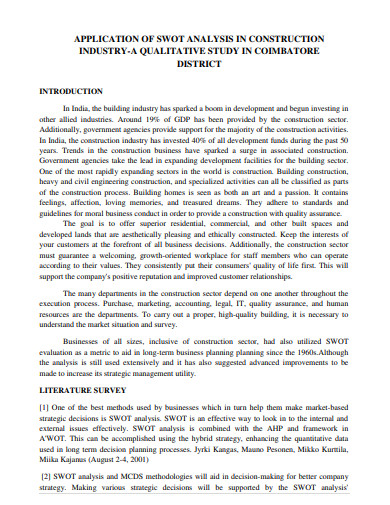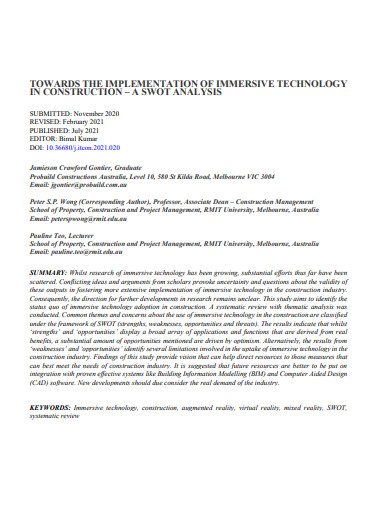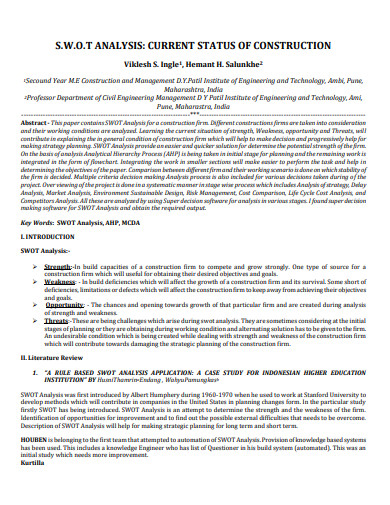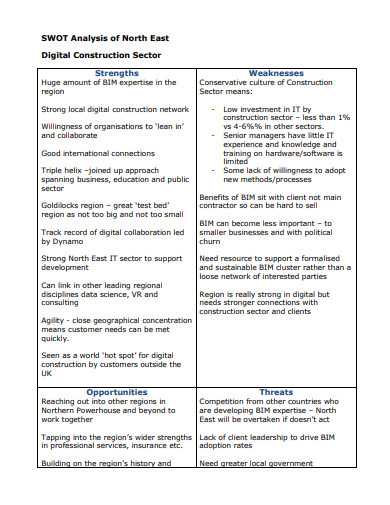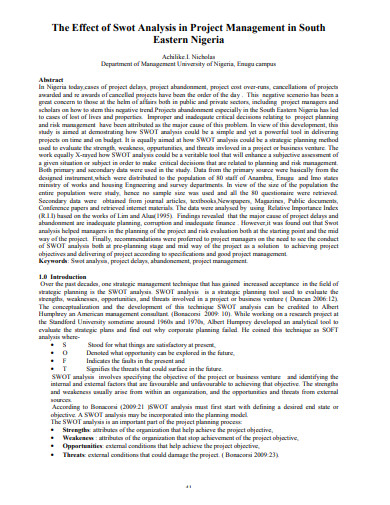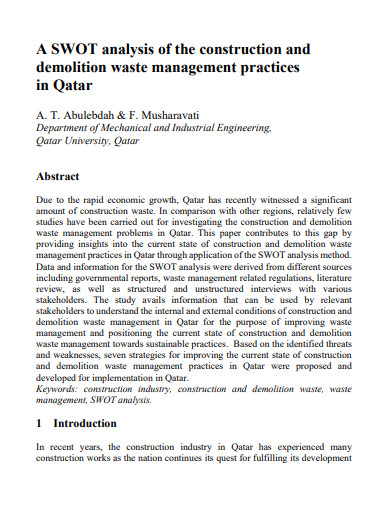In the dynamic world of building and development, a Construction SWOT Analysis stands as an essential tool for success. By delving into the Strengths, Weaknesses, Opportunities, and Threats of the construction sector, we gain a holistic perspective of the industry’s landscape. This invaluable insight allows stakeholders to craft strategic plans, harness emerging opportunities, and mitigate potential risks. Stay ahead of the curve with a deep understanding of the construction arena’s nuances and trends.
13+ Construction SWOT Analysis Samples
1. Construction SWOT Analysis Template Bundle
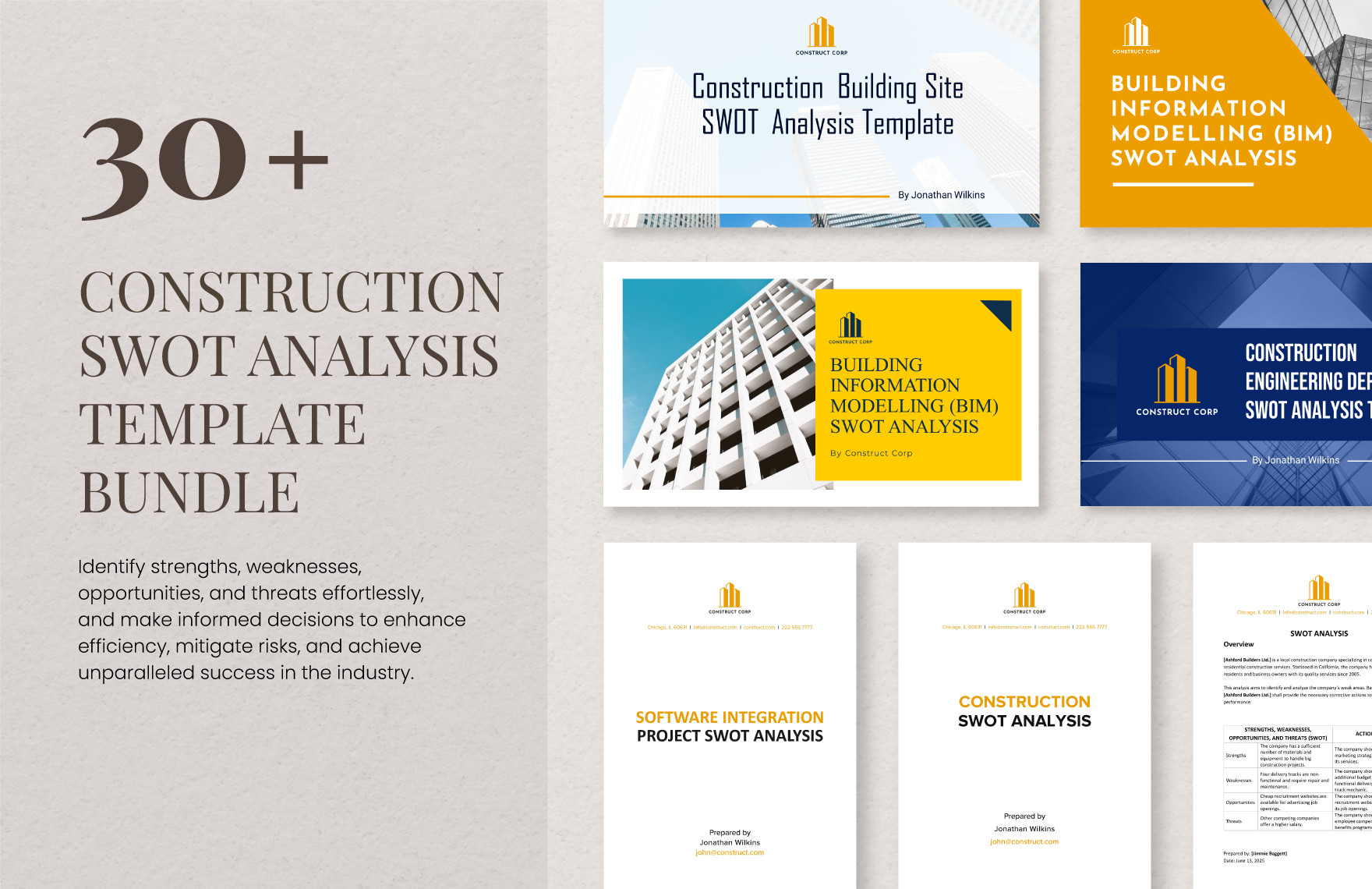
2. Construction SWOT Analysis Template
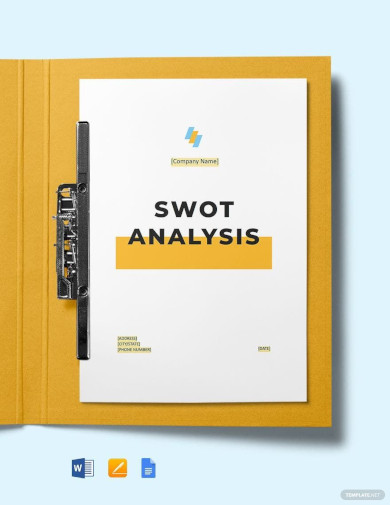
3. Sample Construction SWOT Analysis Template
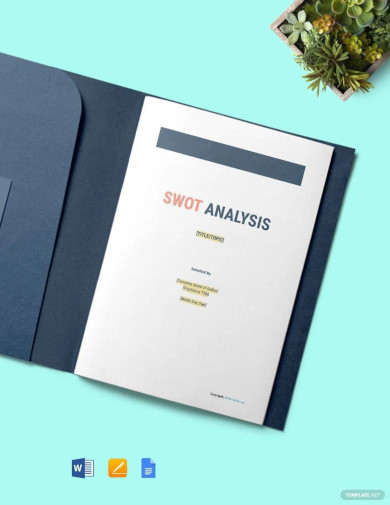
4. Free Construction Business SWOT Analysis Template
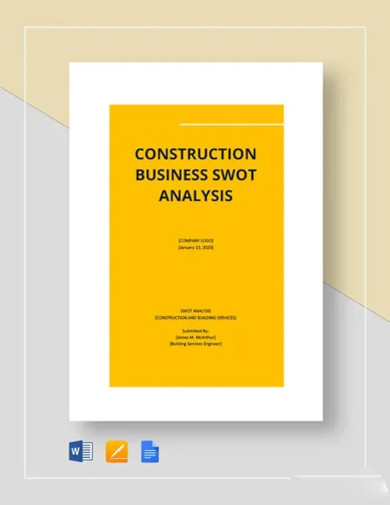
5. Construction Blank SWOT Analysis Template
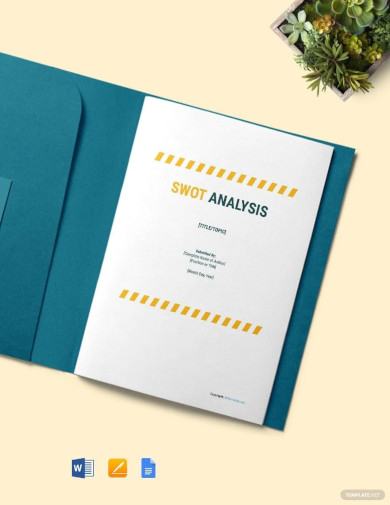
What is a SWOT Analysis for a Construction Company?
Defining SWOT Analysis
SWOT Analysis is a cornerstone tool in strategic planning that evaluates Strengths, Weaknesses, Opportunities, and Threats. By looking at both internal and external factors affecting an organization, it offers a holistic snapshot of its current standing and potential future paths.
The Importance in Construction
For a construction company, a SWOT Analysis is indispensable. The ever-evolving nature of the construction sector, with its vast projects and myriad stakeholders, presents both unique challenges and unparalleled opportunities. Assessing these elements through a SWOT framework allows construction entities to optimize operations, foresee challenges, and harness market opportunities.
Components Breakdown
Strengths: These are the internal attributes that offer a competitive edge. For construction entities, this could encompass a proficient labor force, novel building methods, or robust financial health.
Weaknesses: These are internal factors that could restrict progress or pose disadvantages. In the construction realm, these might translate to aging machinery, a dearth of niche expertise, or a history of project delays.
Opportunities: These are external avenues to achieve greater success in the market. Emerging real estate sectors, governmental infrastructure incentives, or sustainable building trends might represent these opportunities.
Threats: These are external challenges that could negatively impact business operation plans. Potential threats for construction could be economic recessions, stringent regulatory reforms, or an increase in market competitors.
Steps for creating your own Construction SWOT analysis
Understand Your Objective
Begin with clarity. Define what you aim to achieve with the SWOT Analysis, be it an exploration of new markets, the introduction of innovative construction techniques, or a comprehensive company evaluation. This clarity will guide the analysis.
Gather a Diverse Team
The multifaceted nature of construction implies multiple departments collaborate for project execution. Include members from different domains—like finance, engineering, procurement, and HR—to provide varied insights.
Conduct Internal Assessment
Analyze Current Assets: Take stock of your equipment, technological tools, financial resources, and the prowess of your workforce.
Evaluate Company Culture: The ambiance of the workplace, foundational values, and overall morale can serve as strengths or weaknesses.
Scout the External Environment
Market Trends: Stay abreast of the newest developments in construction, whether they relate to technological innovations, material preferences, or evolving client demands.
Regulatory Landscape: Be informed of building norms, green building standards, and labor regulations as they can present either opportunities or threats.
Compile and Prioritize
With the gathered information, sort the data into the SWOT categories. Recognize that not all factors are equally impactful; hence, prioritize based on their significance and alignment with your objectives.
Develop Action Plans
Transform these insights into strategic actions. Address the identified weaknesses, safeguard against recognized threats, exploit available opportunities, and fortify inherent strengths. It’s vital to frequently revisit and adapt the strategy as industry trends shift.
6. Construction Management SWOT Analysis Template
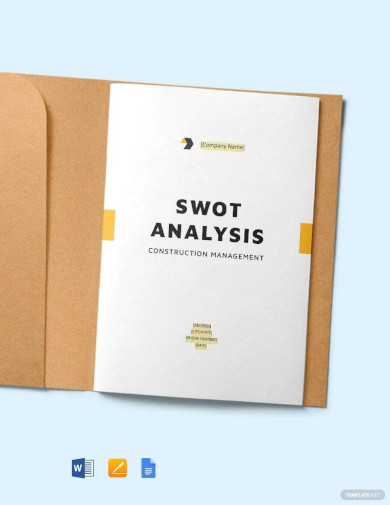
7. Construction Application of SWOT Analysis Template
8. Technology in Construction SWOT Analysis Template
9. Status of Construction SWOT Analysis Template
10. Digital Construction Sector SWOT Analysis Template
11. Construction Industries SWOT Analysis Template
12. Construction SWOT Analysis in PDF
13. Standard Construction SWOT Analysis Template
14. Printable Construction SWOT Analysis Template
Why use a SWOT analysis in Construction?
Understanding the SWOT Framework
SWOT Analysis, which stands for Strengths, Weaknesses, Opportunities, and Threats, provides a structured method to evaluate both the internal and external environments of an organization. This diagnostic tool offers a comprehensive view of a company’s current status and future potential.
Benefits in the Construction Sector
The construction industry is characterized by its dynamic nature, marked by frequent technological advancements, regulatory shifts, and fluctuating market demands. In such an environment, the SWOT Analysis emerges as a beacon for several reasons:
Informed Decision Making: A clear understanding of strengths and weaknesses allows construction firms to make decisions that capitalize on their advantages and address their shortcomings.
Anticipating Market Shifts: Identifying external opportunities and threats enables companies to position themselves advantageously, seizing emerging market trends or shielding against potential downturns.
Strategic Resource Allocation: By pinpointing areas of strength and weakness, companies can allocate resources—whether manpower, finances, or equipment—more effectively.
Risk Management: Recognizing potential threats ahead of time means construction firms can strategize to mitigate or eliminate these risks, ensuring smoother project execution.
How to create a Construction SWOT analysis?
Setting Clear Objectives
Before embarking on the SWOT journey, it’s imperative to define the goals. Are you assessing the viability of a new market? Evaluating a new construction methodology? Or gauging overall company health? Your objectives will shape the analysis process.
Assemble a Multifaceted Team
Given the interdisciplinary nature of construction, a diverse team ensures all perspectives are considered. Engage members from finance, engineering, procurement, HR, and other relevant departments for a comprehensive analysis.
Internal Evaluation: Strengths and Weaknesses
Review of Assets: Assess the current state of machinery, technology, financial reserves, and workforce qualifications. These can highlight strengths or reveal areas needing improvement.
Company Culture Analysis: An organization’s ethos, work environment, and employee morale can either propel it forward or hold it back.
External Examination: Opportunities and Threats
Stay Atop Market Trends: A finger on the pulse of the construction world—from new materials and technologies to evolving customer preferences—will reveal potential opportunities.
Understand the Regulatory Terrain: Familiarize yourself with existing and upcoming building codes, environmental regulations, and labor laws. These can present either windows of opportunity or looming threats.
Synthesize and Prioritize
With a wealth of insights, organize them under the appropriate SWOT sections. It’s essential to prioritize; not all elements will hold equal significance, so rank them based on potential impact and alignment with your strategic goals.
Crafting a Strategic Plan
Using the insights gleaned, develop actionable plans. Build on strengths, address weaknesses head-on, capitalize on opportunities, and devise strategies to counteract or mitigate threats. Periodically review and adjust your strategy in line with industry evolution and company growth.
In the ever-evolving construction industry, a SWOT Analysis serves as an invaluable tool, illuminating strengths to leverage and weaknesses to address. By recognizing external opportunities and threats, companies can strategically navigate market shifts. Employing this comprehensive approach not only aids in informed decision-making but also fortifies a construction firm’s foundation for sustained growth and success.
Related Posts
FREE 10+ Fishbone Root Cause Analysis Samples in PDF
FREE 11+ Cost Volume Profit Analysis Samples & Templates in PDF | MS Word
FREE 6+ Corporate Portfolio Analysis Samples in PDF
FREE 10+ Fault Tree Analysis Samples in PDF
FREE 10+ Comp Analysis Samples in PDF
FREE 10+ Fishbone Analysis Samples in PDF
FREE 10+ Individual Swot Analysis Samples in PDF
FREE 10+ 5 Year Analysis Samples in PDF
FREE 10+ Benefit Costs Analysis Samples in PDF
FREE 10+ Job Hazard Analysis Samples in PDF
FREE 10+ Primary Source Analysis Samples in PDF
FREE 10+ Critical Path Analysis Samples in PDF
FREE 10+ Competition Analysis Samples in PDF
FREE 10+ Activity Hazard Analysis Samples in PDF
FREE 10+ Risk Benefit Analysis Samples in PDF

